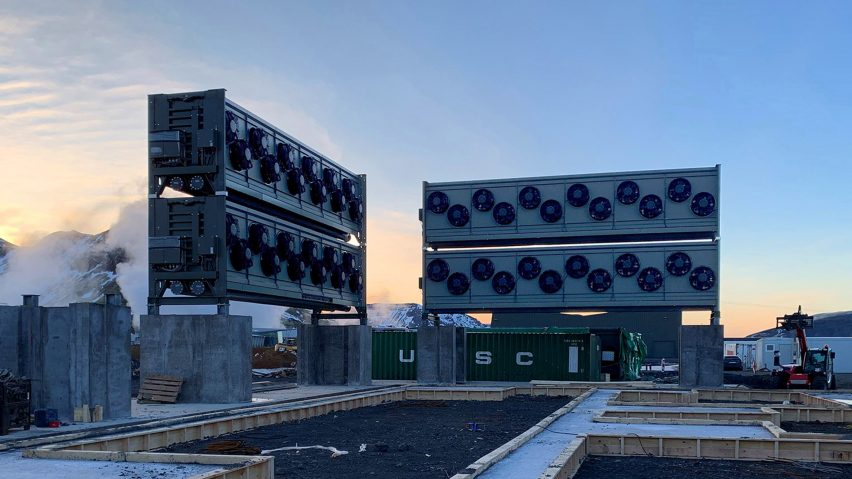
"We're mining the sky because there's too much carbon in it" says Climeworks
Carbon is the most valuable resource on earth, according to Climeworks, which has developed machines that suck it from the air so it can be turned into useful materials.
"We capture CO2 from the atmosphere," said Christoph Beuttler, head of climate policy at the Swiss company. "We're mining the sky because there's too much carbon in it. And it's a sustainable resource."
Climeworks has developed direct air capture (DAC) devices that extract carbon dioxide from the atmosphere.
Making plastic and oil from CO2
In 2017, it opened the world's first commercial direct air capture plant in Switzerland, selling the captured CO2 for use in fertilisers, fizzy drinks and synthetic fuels. The company is currently building its fifteenth plant in Iceland, which will open this summer.
If scaled up sufficiently, its technology could play a large part in reducing atmospheric carbon and thereby preventing climate change, the company believes.
At the same time, it could produce large amounts of valuable carbon that could be used to make everything from fuels to plastics.
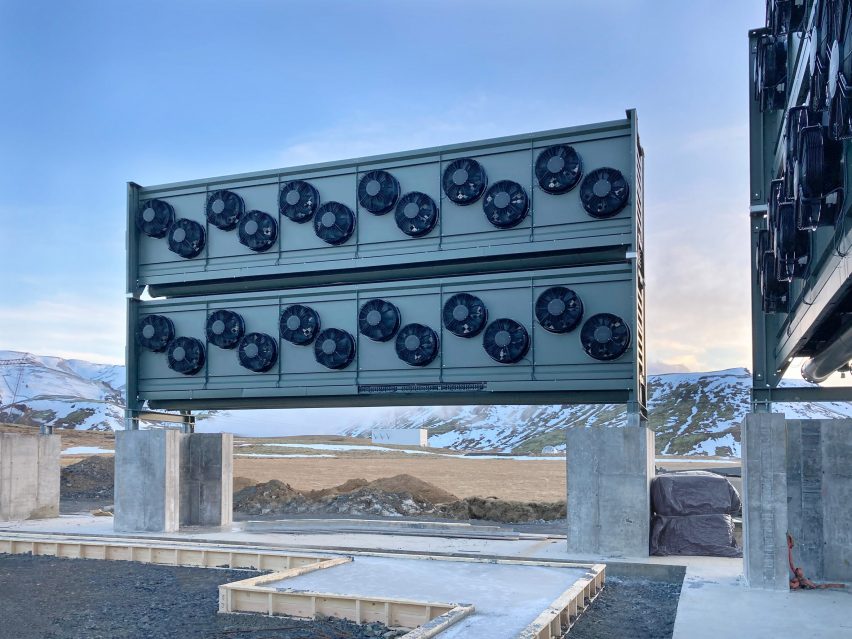
"Carbon is the most valuable resource in our society," Beuttler explained. "We have built our society on carbon. The problem is that it's coming out of the ground and it adds additional carbon to the atmosphere."
"So we capture CO2 from the atmosphere to do two things," he added. "To store it away permanently to achieve negative emissions and to make products from CO2 so you can replace fossil CO2."
"You can build polymers, you can build oils; anything you can get from oil and gas, you can build with that process."
Atmospheric carbon can be used to make cement
Materials made from atmospheric carbon could be transformative for the construction and built environment sector, which together are responsible for an estimated 40 per cent of global emissions.
Cement is the worst single culprit, contributing around eight per cent of all atmospheric carbon. "For your publication, the most interesting thing is probably building materials because you can make synthetic cement that's carbon negative out of this carbon," Beuttler said.
"Because buildings stand for a long time and you can recycle cement, you can basically store CO2 for a long time."
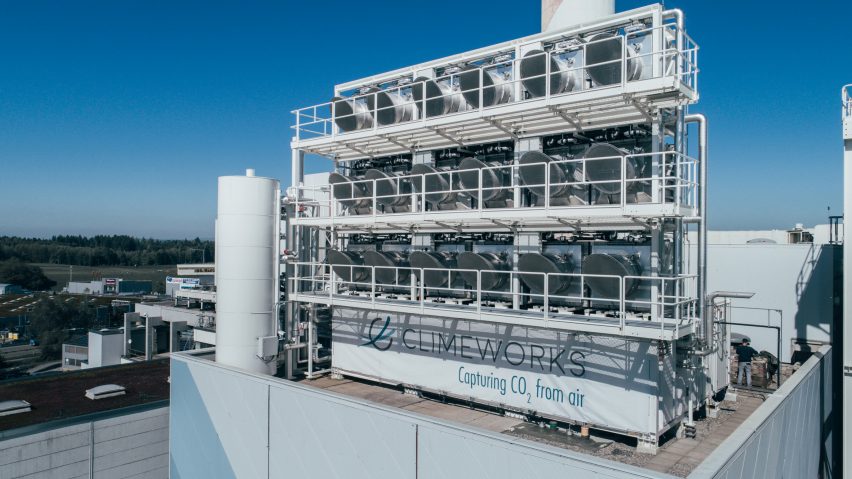
Efforts to neutralise emissions from fossil-based processes are missing the point, Beuttler argues, because the carbon will eventually end up in the atmosphere anyway.
"If you haven't taken atmospheric CO2 to build it, you're simply delaying a fossil emission. Only with atmospheric [carbon] can you can close the carbon cycle."
Defossilising the global economy
Climeworks is not proposing to help decarbonise the global economy; instead, it is proposing to help defossilise it. This means leaving remaining fossil reserves in the ground to prevent new carbon emissions from entering the atmosphere.
"First of all, you have to stop emitting," Beuttler explained. "So mitigation comes first. But there will be a point where you cannot mitigate [any more]."
"You cannot, for example, capture the carbon off the back of the exhaust of aeroplanes and you cannot directly electrify long-distance freight and passenger aeroplanes. "
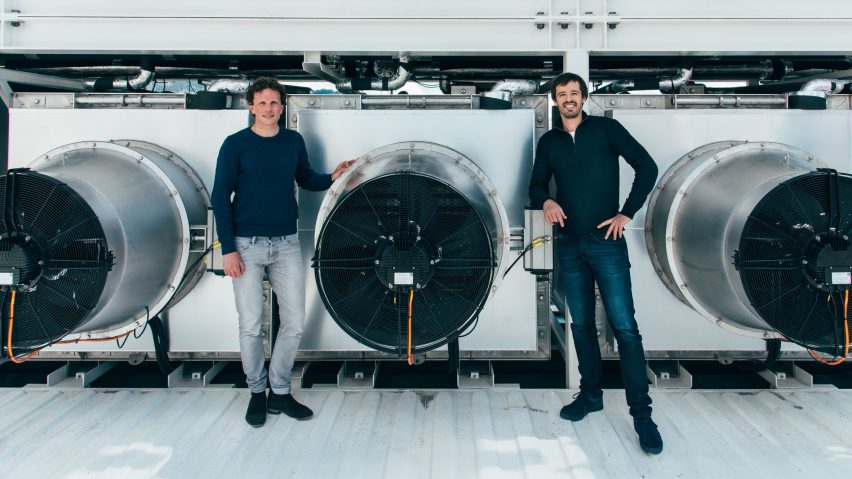
As an aside, Beuttler argues that even aviation could eventually become fossil-free and hence carbon neutral. Aeroplanes could be powered by kerosene made from atmospheric carbon mixed with green hydrogen, which is hydrogen extracted from water using renewable energy.
"You close the carbon cycle because the CO2 gets submitted back into the atmosphere once it's burned," he explained.
Beyond mitigation, a range of measures will be needed to remove huge amounts of carbon dioxide from the atmosphere – an estimated 10 gigatonnes per year – to prevent runaway climate change.
Building materials from the sky
These include direct air capture technologies such as the collectors developed by Climeworks as well as making use of natural processes via large-scale afforestation and biomass projects.
Whichever way it is captured, carbon can then be stored underground (a process known as carbon capture and storage or CCS) or turned into useful materials (carbon capture and utilisation or CCU).
"You have a way of building materials from the sky rather than from the ground," said Beuttler of the latter. "And that's the idea behind this carbon revolution."

Natural processes such as tree-planting and biomass production can only go so far since land is a finite resource that is also needed for food production and other uses.
"You can't scale biomass infinitely," Beuttler explains. "It would need three planets to solve the climate problem."
"And that's where we come in," he adds. "Our technology has a footprint about 400 times smaller [than biomass] and that includes the renewable energy you need [to run the Climeworks plants]."
Powered by renewable energy
Climeworks was founded in 2009 by Christoph Gebald and Jan Wurzbacher, two German engineering graduates from Swiss research university ETH Zurich.
They have since developed CO2 collectors that resemble giant stainless-steel air-conditioning units, each about the size of an SUV. These are arranged in container-sized rigs.
Air is drawn into the collectors by a fan, where carbon dioxide is absorbed by special filters that attract the gas molecules. Once the filter is full of CO2, the collector is sealed and heated up to around 100 °C.
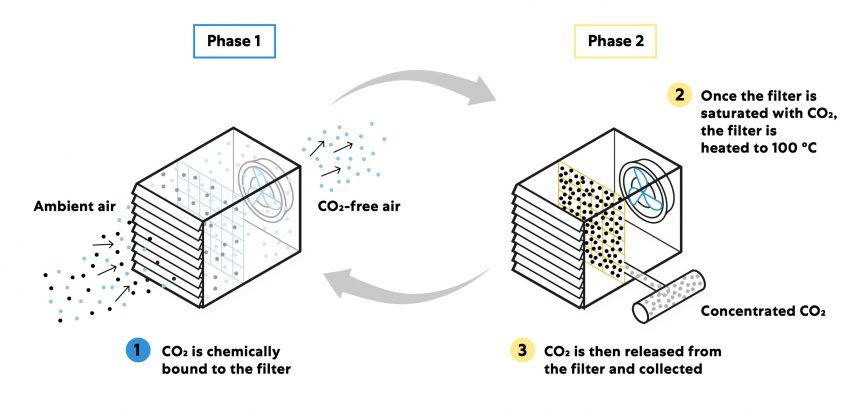
This causes the filters to release concentrated CO2 gas, which is then cooled and stored as liquid CO2. The process is around 90 per cent efficient, meaning that for every 100 tons of carbon dioxide captured, just 10 tons are re-emitted into the atmosphere.
There are several rival technologies that work in a similar way but Climeworks claims its version operates at lower temperatures, making it cheaper to run.
The machines require energy to run the fans and heat the filters, so they need to be powered by renewable sources if they are to avoid putting more carbon into the atmosphere than they remove.
"If you're in the business of taking CO2 out of the atmosphere, you don't want to emit more," says Beuttler. "So our technology can run on renewables only. We can use waste heat or solar thermal sources and that makes it quite efficient."
Carbon can be captured where it's needed
Its new Orca plant in Iceland, which is due to open this summer, will be powered by a nearby geothermal energy plant. Rather than being turned into products, the carbon captured by this plant will be stored underground.
To do this, Climeworks has teamed up with CO2 storage company CarbFix, which will dissolve the gas in water and then inject it into the ground. There, it will react with the basalt bedrock to form new calcite rock, locking away the carbon forever.
Future Climeworks plants could be set up according to local commercial demand. Since the concentration of atmospheric carbon is pretty much the same everywhere on the planet, its machines can be located wherever there is a renewable energy source and wherever the extracted carbon, which is sold in the form of odourless liquid CO2, is needed.
For example, a carbonated drinks plant in Hawaii could set up collectors next to its factory and use the carbon to make its products fizzy, Beuttler explained.
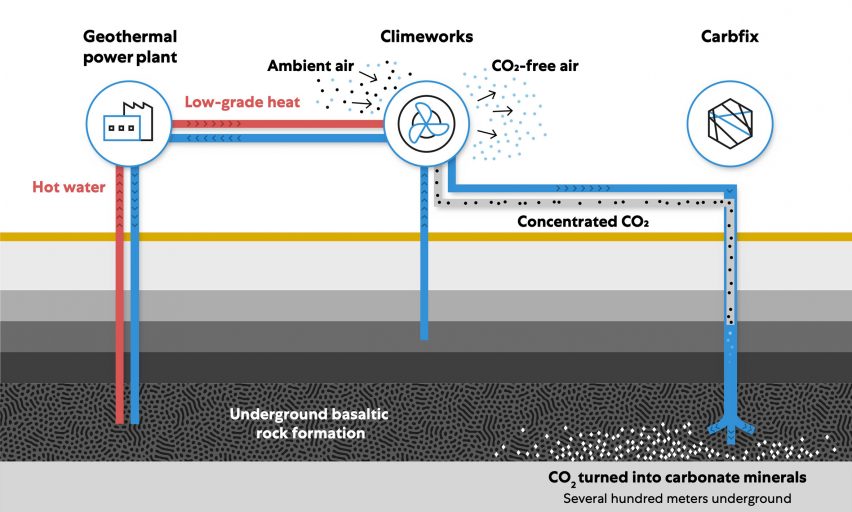
The main problem is that carbon captured from the sky is currently too expensive compared to fossil carbon. Climeworks' carbon costs around €900 per tonne, which is almost twice as much as the price of crude oil.
The cost of polluting the atmosphere is even lower: even though the price of offsets on the EU's carbon trading market has soared by 50 per cent to a record high this year, it still costs just €50 per tonne.
"To make this a mass business case, we need policies in place that make emitting fossil CO2 more expensive or to set the guardrails so we can become bigger," said Beuttler, comparing the potential to that of the solar industry, where prices have plummeted over the past few decades. "And then it's just economies of scale."
Beuttler is realistic about the scale of effort required to make a meaningful dent in atmospheric carbon: he calculates that it would require around 80 million Climeworks units to remove four gigatons of carbon from the atmosphere each year, which is around 40 per cent of the total amount that needs to be captured each year to stabilise the climate.
"We build 80 to 100 million cars per year, globally," he said. "So it's doable, but it needs to become one of the largest industries there is."
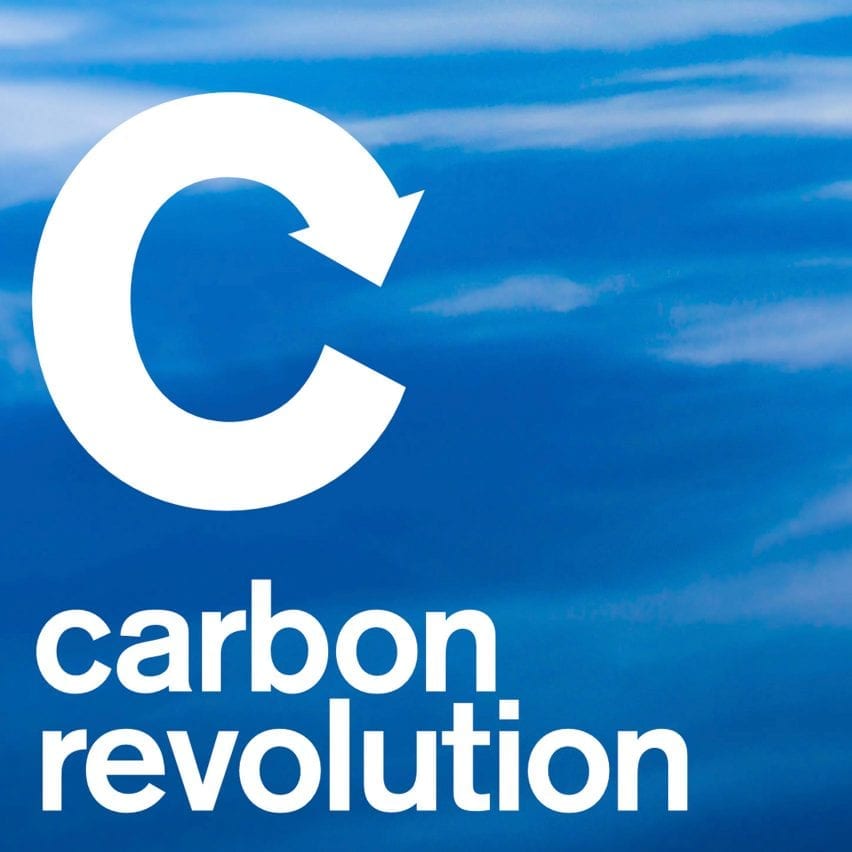
Carbon revolution
This article is part of Dezeen's carbon revolution series, which explores how this miracle material could be removed from the atmosphere and put to use on earth. Read all the content at: www.dezeen.com/carbon.
The sky photograph used in the carbon revolution graphic is by Taylor van Riper via Unsplash.